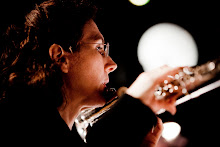Be sure to specify if you want these sounds:
A. produced in playing position (so the air goes across the flute and produces a pitch that corresponds with the fingers), or
B. produced inside the flute: i.e., if you want the flutist to cover the embouchure hole and produce a kind of unpitched "white noise".
Sometimes I am asked to produce type "A" with the specification "no discernible pitch". This is nonsense: if a flutist blows across the flute they will always produce some sort of pitch. Even with no fingers down, you will get something in the neighborhood of C#. If you want unpitched noise, ask to flutist to blow into or inside the flute (cover the embouchure hole). In this position, the flutist can produce a range of unpitched sounds from bright (higher sounding white noise) to dark (lower sounding white noise) by changing the position of the tongue.
This leads to my next point: the use of different vowel sounds for color effects. This is most effective with the embouchure hole covered (type "B"). A good example is Hans Zender's Lo-Shu II. Vowel sounds are much less marked in normal playing position (type "A"), so be sure to take care in ensemble situations.
Some general thoughts about notation:
There are several notational traditions from the Artaud and Levine books concerning the notation of "aeolian" or "air" sounds which I would like to ask composers to avoid. When composing these sounds especially in a situation where rhythm is crucial (especially in an ensemble situation) please avoid the notation that uses empty note-heads:



or simply with a filled circle connected to an open circle by a dotted line:



No comments:
Post a Comment